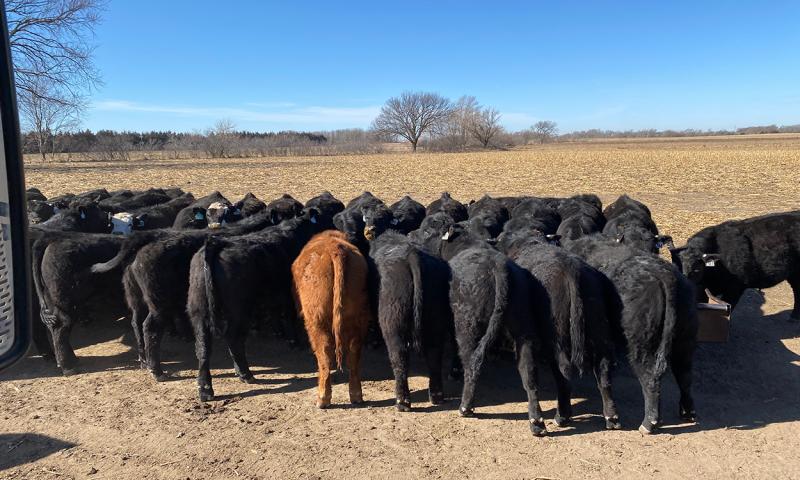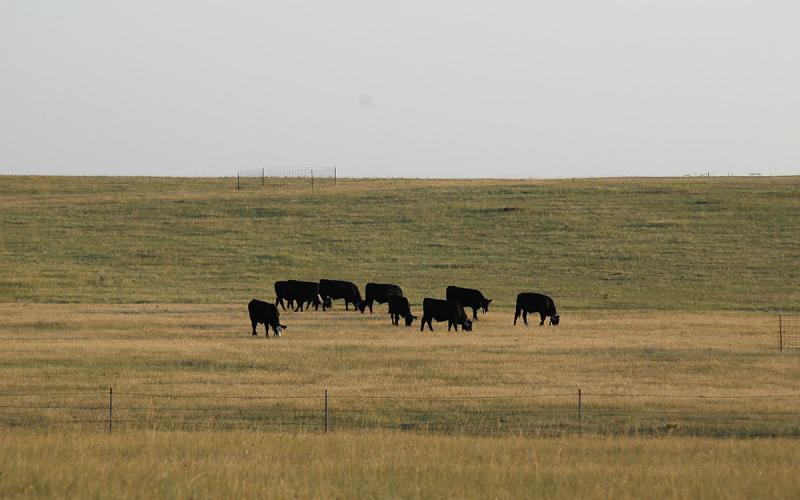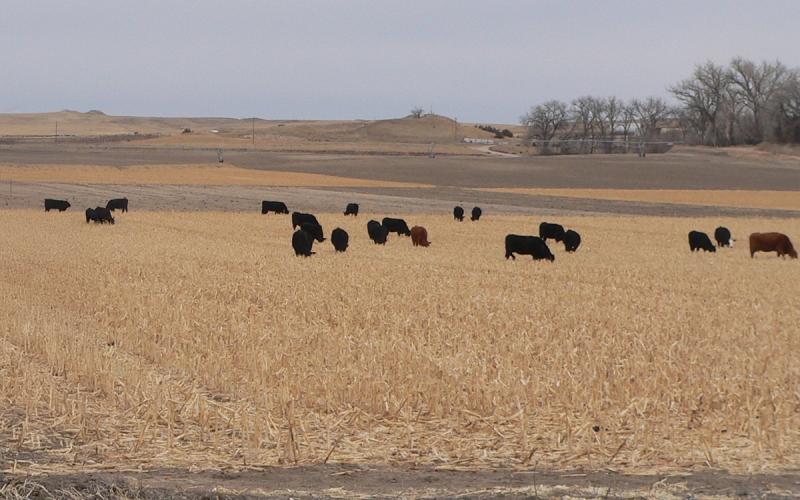
Written by Sydney Vanderhoff, former SDSU Extension Beef Nutrition Field Specialist.
Backgrounding systems are known to have a large impact on animal performance and carcass characteristics. In Midwest production systems, it is common to fall wean calves and background them over the winter before allowing them to either graze in the summer or be placed on finishing diets. The purpose of backgrounding is to increase body weight of calves after weaning and before the finishing phase. No matter the backgrounding system used, rate of gain can be improved by increasing the amount of energy and protein available beyond the animal’s maintenance requirements. Distillers grains are a common supplement used in backgrounding systems because of their high energy and high protein content. Corn residue is an abundant forage resource and, with the addition of supplementation, can be used to background growing calves over the winter.
A key definition to understand is compensatory gain, which I’m sure many of us have heard of it but weren’t sure what exactly it meant. Compensatory gain is described as, “Cattle on a low plane of nutrition will compensate (make up) when being fed a higher plane of nutrition.” While compensatory gain is complex, and not completely understood, this study is a good illustration of a compensatory gain response.
Investigating Backgrounding Systems
A two-year study at the University of Nebraska-Lincoln evaluated the effects of backgrounding systems on growing calf performance. We wanted to determine if compensatory gain can be partially explained by differences in intake, and if smaller cattle of a similar age eat more as a percentage of their body weight. During the winter period, two different backgrounding systems were used; either dry lot or grazing corn residue, and they were fed to target 1 pound of average daily gain (LOW) or 2 pounds of average daily gain (HIGH). Steers grazing corn residue received supplementation of 6 pounds dry matter (HIGH) or 2 pounds dry matter (LOW) of distillers grains per head daily. Following the winter period, steers entered the feedlot for a mimicked grazing period to measure intake and cattle gain. The diet consisted of corn silage, wheat straw, grass hay and a supplement with urea. This diet was formulated to mimic grazing cattle with a similar TDN (energy) to grass pasture.
Results from the winter period and summer period have some key takeaways for producers. At the end of the winter period, calves backgrounded at a high rate of gain (2 pounds average daily gain) had greater average daily gain and ending body weight, which was by design to produce a potential compensatory gain response in the following phases. Entering the summer phase, HIGH steers had a greater body weight than LOW; however, LOW steers gained 0.20 pounds per day more during the summer, shown in Table 1. The difference in average daily gain in the summer represents a compensatory gain response. Calves backgrounded at a LOW rate of gain during the winter period compensated during the summer. With the additional body weight from the winter phase, HIGH steers resulted in a greater ending body weight compared to LOW. A big factor we looked at during the summer phase was dry matter intake. Dry matter intake was not different between LOW and HIGH steers; however, intake expressed as a percent of body weight was greater for LOW than HIGH, 2.4% compared to 2.1%.
| Treatments | Pen LOW | Pen HIGH | Stalks LOW | Stalks HIGH |
|---|---|---|---|---|
| Initial Body Weight, Pounds | 693 | 772 | 682 | 788 |
| Ending Body Weight, Pounds | 902 | 965 | 895 | 977 |
| Average Daily Gain | 2.05 | 1.90 | 2.10 | 1.86 |
| Dry Matter Intake, Pounds | 19.23 | 18.99 | 18.68 | 18.96 |
Key Takeaways
Some key points to take away from this data is that wintering at a HIGH rate of gain gives greater gains and ending body weight than LOW rate of gain. Following winter, LOW rate of gain steers had greater average daily gain than HIGH, which could be a result of compensatory gain. Cattle backgrounded at a LOW rate of winter gain had a greater intake as a percent of body weight, indicating that smaller cattle of a similar age do, in fact, eat to body weight. Reducing performance during the wintering phase results in compensatory gain, but still results in less pounds over the entire system. Stocking rate for smaller and larger cattle should be the same as each group consumed the same amount of dry matter.

